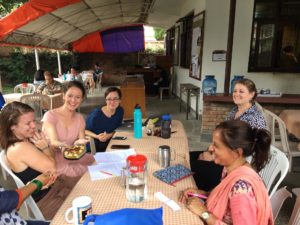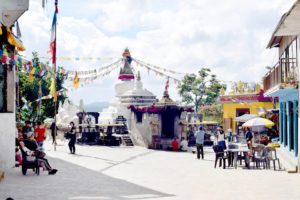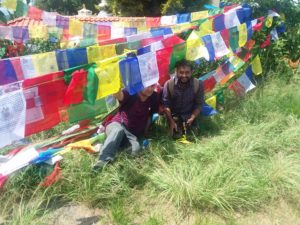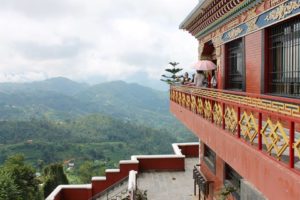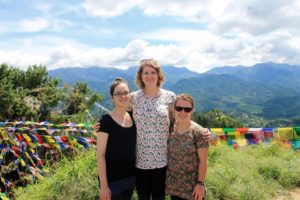
One of the best things about this program (other than the Nepali language instruction, of course!) is all of the amazing researchers I have been able to meet. From art historians and medical anthropologists to linguists and zoologists, I’ve been able to learn so much about Nepal that I would not have otherwise.
One zoologist currently studying at Oxford in England, Phoebe Griffith, generously offered to come speak to the fellows I volunteer with at Samaanta Foundation. My classmates and I have found Phoebe an endless resource of knowledge about animals in Nepal. Over midterm break, she even took us out into the forrest to search for Chinese pangolins, an endangered armadillo-like animal that are quite rare (and hard to find, luckily, since they are often poached) and whatever other animals we could come across. (I’m sad to say, I aborted the mission pretty quickly as I watched with horror the growing number of leeches collect on my shoes and legs. Those little suckers move so fast for things so small!) I was thrilled when she agreed to give a presentation to the fellows on gharials, an endangered crocodilian species that can be found in Nepal’s jungle region.
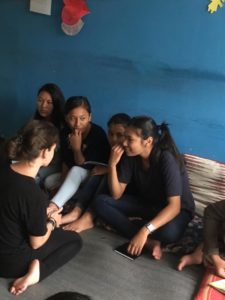
In preparation for her talk, I lead a discussion with the fellows on conservation – we all learned so much! Some of the fellows that study biology told us all about different conservation efforts in Nepal and what conservation means to them. Even the fellows that don’t formally study biology had read about conservation in books or in the news. I left with the impression that a significant portion of Nepali youth hold conservation to be an important part of the country’s future. I found myself wondering about these dynamics in the context of my research interests on natural disasters and civil/political participation. It will be exciting to see how Nepal’s conservation efforts evolve in the coming years.
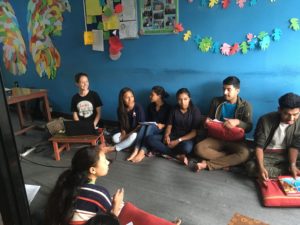
Phoebe’s talk was as wonderful as we had hoped for. We learned about how different species of crocodilians eat different things, are different sizes, and have different habits. Gharials, for example, are of no threat to humans (they only eat fish!) and are actually great parents to their babies. They can grow to be quite big, though at the moment the population in Nepal is very small and the adults are not as big as their species can grow to be. The knob at the end of the males’ noses can be used to make sounds like big POP!s that act as forms communication. Currently, the gharial population is threatened by their being caught in fishing nets, sand mining (for concrete), and manmade dams. Education programs are underway to help people get to know what they can do to help save the Nepali gharial populations.

As the language program is coming to an end, I find myself reflecting on how lucky I am to have been able to get to know such a diverse group of people – the Nepali youth at Samaanta Foundation, the network of researchers learning languages at the institute, the teachers, my homestay family, and even the taxi drivers and shop keepers in and around Boudha. I am sure my research will be benefited not only from my having learned Nepali, but also from being able to learn more about this country and the culture and peoples housed within.



